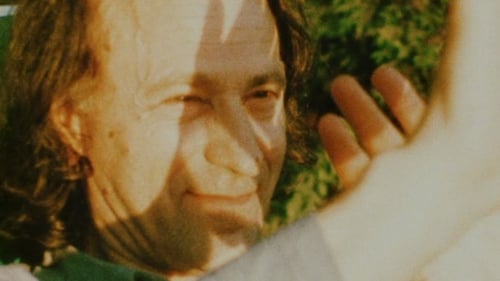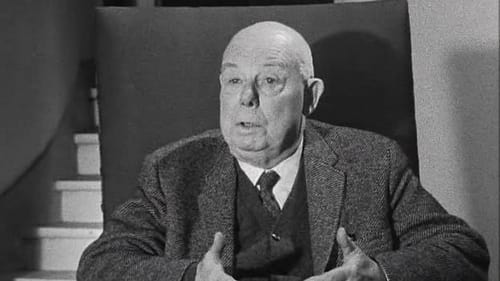Henri Langlois
Рождение : 1914-11-13, İzmir, Ottoman Empire
Смерть : 1977-01-13
История
Henri Langlois was a French film archivist and cinephile. A pioneer of film preservation, Langlois was an influential figure in the history of cinema.

Self (archive footage)
Born in Berlin in 1896, Lotte Eisner became famous for her passionate involvement in the world of both German and French cinema. In 1936, together with Henri Langlois, she founded the Cinémathèque Française with the goal of saving from destruction films, costumes, sets, posters, and other treasures of the 7th Art. A Jew exiled in Paris, she became a pillar of the capital's cultural scene, where she promoted German cinema.

Self - Film Archivist (archive footage)
Фильм рассказывает о судьбе фильма Жоржа Мельеса «Путешествие на Луну» («Le Voyage dans la Lune»), от момента создания и вплоть до наших дней.

Life and work of the founder of the Cinémathèque Française.

A profile of the film director Roberto Rossellini, looking at his life, personality and films, following his career and his relationship with Ingrid Bergman.

Self
«Фильм состоит из 124 коротких скетчей, каждый продолжительностью от полминуты до примерно двух минут. Портреты людей, с которыми я провел время, мест, времен года, погоды (штормы, снегопады, метели и так далее). Многое о моих друзьях кинематографистах - улицы и парки Нью-Йорка - короткий побег на природе, за город - ничего зрелищного, неважного праздника жизни, который к настоящему времени прошел, и остается только в качестве записи в этих личных кратких набросках...» Йонас Мекас.

Self (archive footage) (uncredited)
A woman goes to Cannes and, lost in its chaos and unable to obtain tickets, ends up watching it on television from her hotel room.

Self
Henri Langlois, founder and director of the Cinémathèque française, is interviewed in his museum at the Palais de Chaillot and talks about cinema. “Henri Langlois's anti-courses” are made up of a set of short films, or more exactly of chapters. Each chapter is devoted to a filmmaker or to a significant pivotal period of such or such a country and of such or such style, or to a group of men whose action was, at one time, decisive for the course of cinema.

Himself
Henri Langlois, interviewed in the Cinema Museum at the Palais de Chaillot, talks about his vision of cinema's past, present and future, before a brief jaunt through the museum as it was in 1975.

Director
"On 2 March 1974, Henri Langlois, co-founder of the Cinémathèque française, screened a partly impromptu edit of films and fragments from the nation’s silent film production." - IFFR 2019 Programme "It was originally made by Langlois for a presentation whose origins or motives are unclear, as is the thematic or narrative through-line in the epic, though it is said that when he presented the film Langlois was doing something akin to cutting it together live in the projection booth. It definitely goes chronologically through French cinema, definitely avoids a general historiography and obvious citations, and definitely gravitates towards films shot in Paris, yet none of these touchpoints elucidate exactly what Langlois’s epic essay film was intended for. It was found in the Cinémathèque on the shelves only recently and digitized, embalming what feels like a very specific and quite personal guided tour through cinema, with the guide (Langlois) missing." - Daniel Kasman, MUBI

Himself

Himself
Unfinished documentary portrait. During 1971, Henri Langlois was spending his life at the Cinémathèque at the Palais de Chaillot and devoting himself entirely to the development of his museum without ever sparing himself. He needs to touch, place, nail, shape each corner himself, imagining each new arrangement. The smallest detail counts, the smallest fold of costume. He can spend hours adjusting a jacket, and fatigue sometimes surprises him around a staircase ...

Producer
A woman finds herself mysteriously pregnant. We do not know anything about the father who could be a simple ... bilboquet!

Self
Documentary portrait of Henri Langlois, co-founder of the Cinémathèque Française.

Writer
Extract of rushes from the unfinished documentary project written and produced by Henri Langlois on Marc Chagall.

Director
Extract of rushes from the unfinished documentary project written and produced by Henri Langlois on Marc Chagall.

Self
Documentary about filmmaker Jean Grémillon.

Himself
Wednesday July 31, 1968, almost six months after the start of the "Langlois affair" which saw the government attempt to oust the founder of the Cinémathèque française, triggering massive support from the biggest names in world cinema, Henri Langlois finally resumed possession of the hall of the Palais de Chaillot and celebrates his return with a tribute to Charlie Chaplin.

Self
Eric Rohmer leads a conversation with Jean Renoir and Henri Langlois on the art of filmmaker Louis Lumière.

Lui-même

Self
In this documentary, giants of italian cinema such as Rossellini, De Sica, Fellini and Zavattini talk about the importance of cinema after WW2, and about huge moments of social rebellion. This movie gives the floor to the creators of italian neorealism.

Self
At the world premiere of "Gertrud" in Paris, December 1964, Dreyer is greeted by many celebrities of the French cinema: Clouzot, Langlois, Truffaut, Godard, Anna Karina. Afterwards Dreyer delivers short comments on the style of each of his films.

Self
Made for Cinéastes de notre temps series. In 1964, several French New Wave auteurs discuss the success and crisis of the wave. Featuring Claude Chabrol, François Truffaut, Jacques Rivette, Jean-Luc Godard, Jacques Rozier, Jacques Demy, Agnès Varda, Jean Rouch, and many others.

Self
Furtive traces of a visit, a certain February 22, 1962: Buster Keaton.

Himself

Producer
Between 1950 and 1955, Henri Langlois tried to produce, on behalf of the Cinémathèque française, several films devoted to great artists, with their cooperation, by entrusting them with virgin film stock. Wrote Langlois on the unfinished project, epic in scope: "We had the idea of asking poets, painters, scholars, writers and even repressed filmmakers [...] to make films in 16mm, with the means at hand, without taking into account any commercial concern or censorship." What precious little came of the project was eight minutes of film from Matisse and twenty-some from Marc Chagall, released at a later date.

Writer
Between 1950 and 1955, Henri Langlois tried to produce, on behalf of the Cinémathèque française, several films devoted to great artists, with their cooperation, by entrusting them with virgin film stock. Wrote Langlois on the unfinished project, epic in scope: "We had the idea of asking poets, painters, scholars, writers and even repressed filmmakers [...] to make films in 16mm, with the means at hand, without taking into account any commercial concern or censorship." What precious little came of the project was eight minutes of film from Matisse and twenty-some from Marc Chagall, released at a later date.

Director
Between 1950 and 1955, Henri Langlois tried to produce, on behalf of the Cinémathèque française, several films devoted to great artists, with their cooperation, by entrusting them with virgin film stock. Wrote Langlois on the unfinished project, epic in scope: "We had the idea of asking poets, painters, scholars, writers and even repressed filmmakers [...] to make films in 16mm, with the means at hand, without taking into account any commercial concern or censorship." What precious little came of the project was eight minutes of film from Matisse and twenty-some from Marc Chagall, released at a later date.

Director
This silent film on the Paris Metro was the first foray into film by Georges Franju and only foray into the realization of the future creator of the Cinémathèque Française, Henri Langlois.




